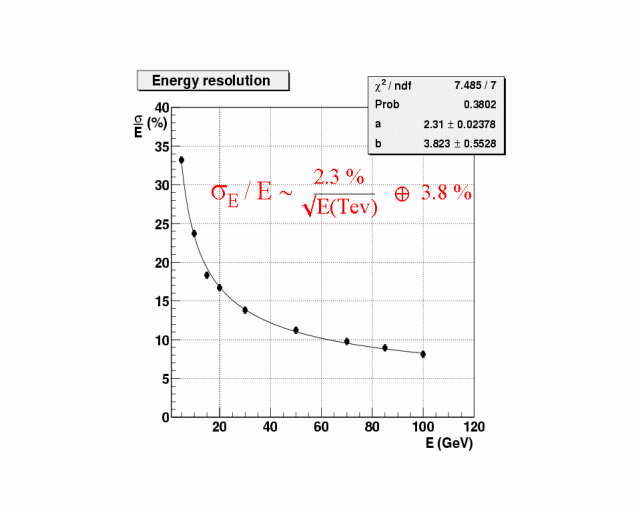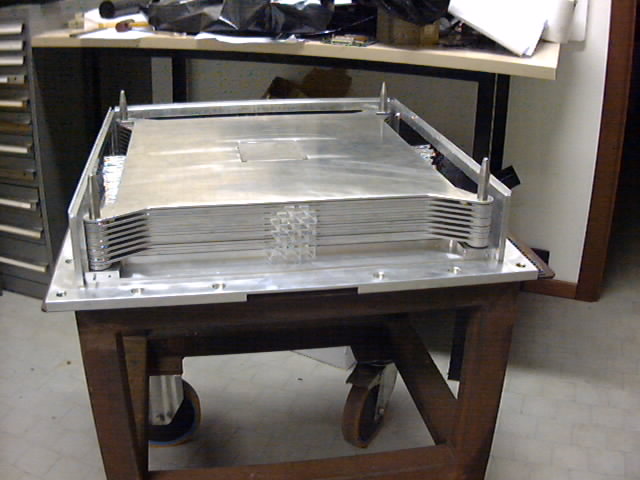A reduced scale Tungsten/Scintillating-Fiber calorimeter prototype 16 radiation lengths thick (instead of 20 X0 as in the CREAM baseline design) was built in 2002 in the framework of the R&D project WCAL approved by INFN - CN5.
In order to test and verify a number of technical solutions for the mechanics of the calorimeter, a full-size (50 x 50 cm2) Al frame was built in Pisa (sezione INFN) and Siena (Gruppo Collegato INFN) comprising a stack of 16 layers of 4 mm thick Al plates, machined (by computer controlled high-pressure water-cut) to the size and shape forseen for the CREAM calorimeter.
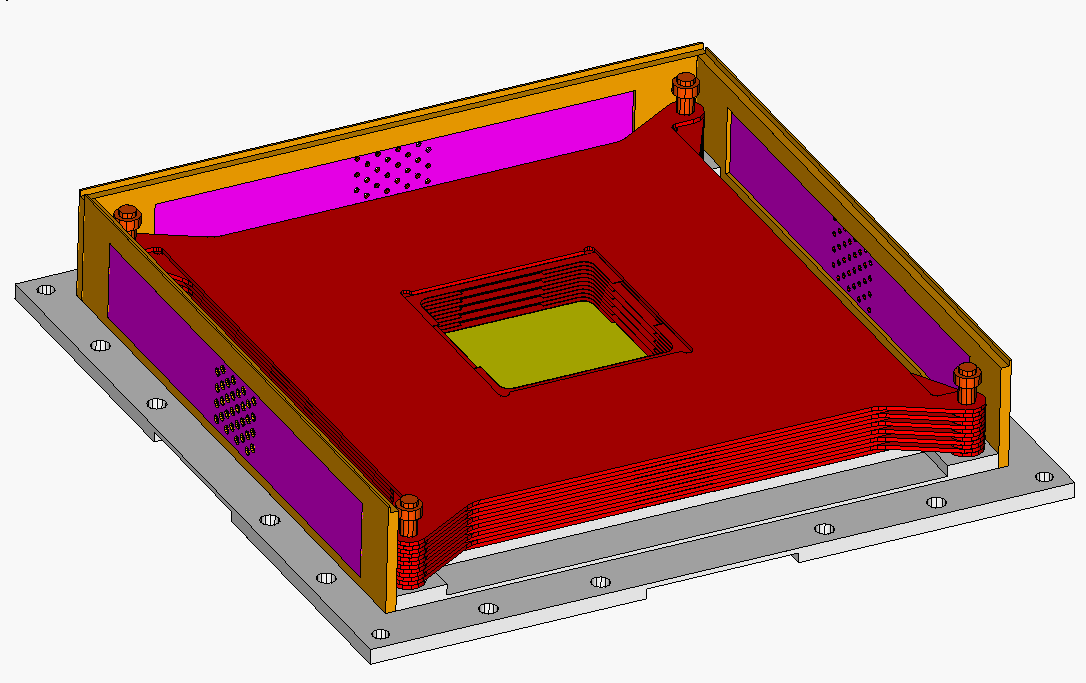
Each Al layer was further machined, around the centre, in order to accomodate the insertion of square Tungsten plates (3.5 mm thick) with increasing lateral dimensions (up to 20 x 20 cm2 ) and instrumented with a maximum of 8 scintillating fibers ribbons (1 cm wide) constructed according the the CREAM baseline design. In this way, an active area not larger than 8 x 8 cm2 was instrumented, with orthogonal views on alternate layers. A total of 96 channels were read-out via two MAPMTs and one single-anode PMT. The calorimeter was assembled by piling up the 16 layers into the support structure as shown in the picture below.
Double-cladding 0.5 mm diameter scintillating fibers were assembled into1cm wide ribbons. Each ribbon was read out through an acrylic light-mixer optically coupled a bundle of thin clear fibers. The 16 layers were instrumented with a total of 96 fiber ribbons, each with an active length of 50 cm. The number of ribbons per layer ranged from 4 to 8 increasing along the calorimeter depth. Due to the limited total number of photomultiplier pixels available, only 8 layers had individual fibers read-out by a total of 2 multi-anode photomultipliers with 16 anodes each (Hamamatsu H6568) . The first 2 and last 6 layers of the calorimeter had their light output summed up into one (single anode) photomultiplier (ETL-9814A). Individual analog signals were fed into a charge integrating gated ADC (Caen V792) with a charge resolution of 100 fC. Digital read-out was carried out via a VME-to-PCI interface (SBS620).
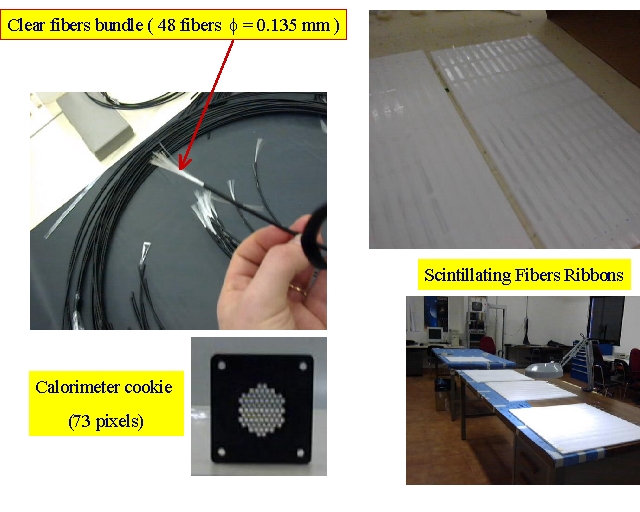
The calorimeter prototype is shown on its rotating fixture during the final assembly in Pisa (early August 2002).

The calorimeter prototype at Cern beam X7 on August 2002 where its response to low-energy e.m. showers below 100 GeV was tested.
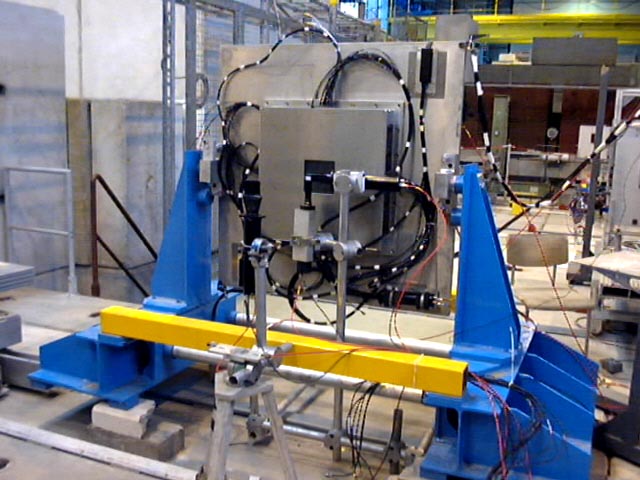
An energy scan was carried out with electrons beams of energies ranging from 5 to 100 GeV. As the calorimeter is designed for operation in the multi-TeV range, the sampling fraction has to be of the order of a few per mill in order for each calorimeter cell to provide signals within the available dynamic range of the system. Therefore, a quite large contribution to the uncertainy on the energy measurement is to be expected at energies below 100 GeV due to the large fluctuations in the shower energy sampling. Such a term becomes negligible at the TeV energy scale.
- The beam test results in terms of linearity and energy resolution were found in good agreement with expectations as detailed in the paper :
- Low-energy beam test results of a calorimeter prototype for the CREAM experiment
-
